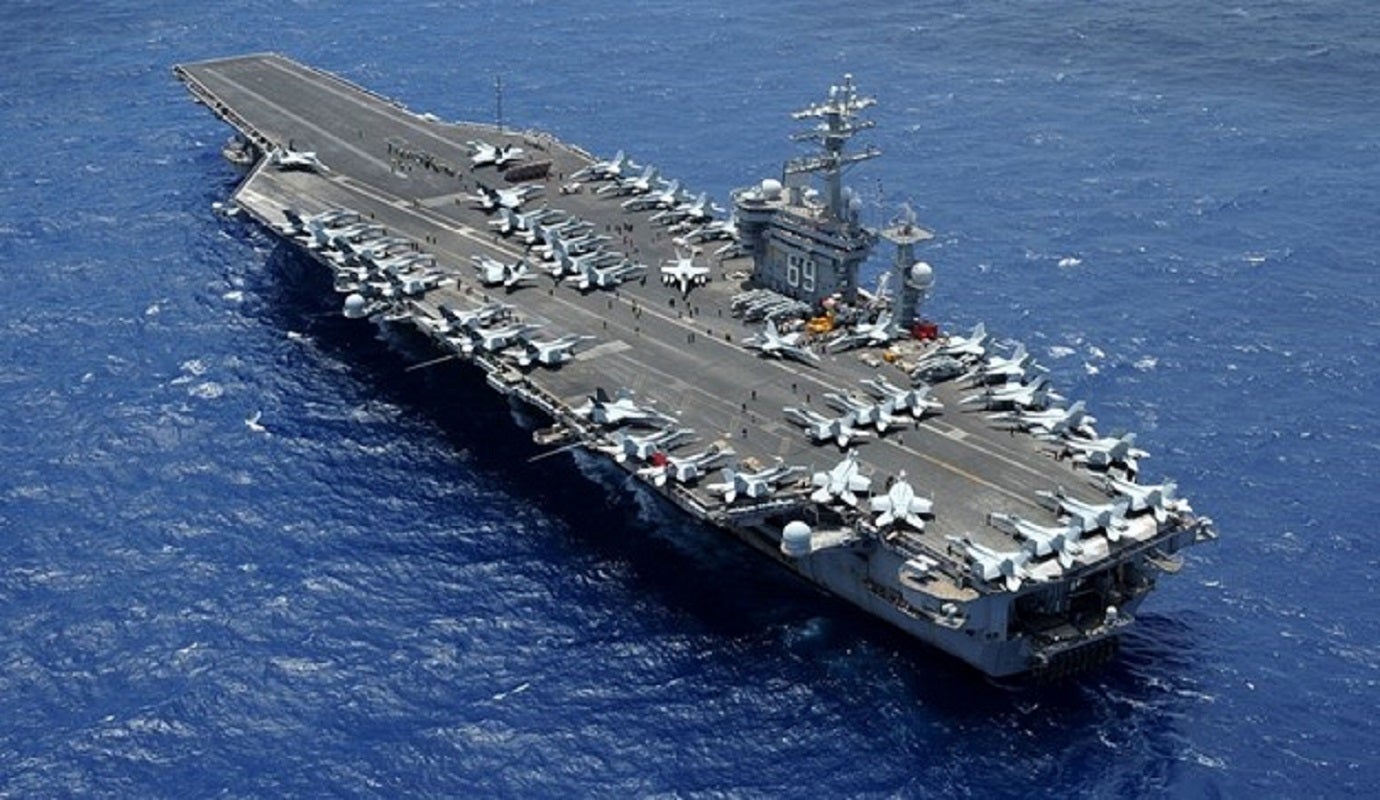
The US Defense Secretary, Lloyd J. Austin III, directed a second Carrier Strike Group (CSG) led by another nuclear-powered aircraft carrier, the USS Dwight D. Eisenhower, to join the Ford CSG in the eastern Mediterranean on 14 October.
Eisenhower (CVN 69) leads a fleet comprising the guided missile cruiser Philippine Sea (CG 58), guided missile destroyers Gravely (DDG 107) and Mason (DDG 87), as well as a Carrier Air Wing 3 with nine aircraft squadrons.

Discover B2B Marketing That Performs
Combine business intelligence and editorial excellence to reach engaged professionals across 36 leading media platforms.
The decision was made as “part of our effort to deter hostile actions against Israel or any efforts toward widening this war following Hamas’ attack on Israel,” Austin asserted.
Austin is faced with the dilemma of balancing what he has described the US’s “ironclad commitment to Israel’s security” with concerns that the conflict may spill over to other areas in the Middle East, wherein Iran has expressed condemnation of the Israeli regime.
All fingers are pointing to Iran – a country with close ties in having supplied anti-Israeli militant groups with weapons, including Hamas, the organisation that began attacking Israel last week, and Hezbollah, a Lebanese Shia Islamist militant group.
The US Department of Defense is said to have acknowledged Iranian influence in the conflict. The Financial Times reported that the US has already reached out to the Iran, warning the republic against escalating the war into a regional conflict.

US Tariffs are shifting - will you react or anticipate?
Don’t let policy changes catch you off guard. Stay proactive with real-time data and expert analysis.
By GlobalDataTwo CSGs prepare to support Israel in expected incursion in Gaza
It is widely expected that the Israel Defence Forces, having mobilised more than 300,000 reservists in the past week, are preparing for a ground incursion in Gaza, a strip of Palestinian territory it bombarded with more than 2,000 airstrikes last week.
While the deployment of two CSGs to the eastern Mediterranean shows a considerable show of force and deterrence against broadening the conflict, what role should we expect the US force to play in relation to Israel’s ground incursion in Gaza?
When deployed closer to the conflict over the weekend, Rear Admiral Marc Miguez, Commander of the Eisenhower CSG, commented: “Our presence will undoubtedly strengthen relationships with our allies and partners, as we share the goal to deter aggression, and if required, deliver overwhelming combat power.”
The form of support a US CSG can take varies, it has enormous capacity, firepower and intelligence, surveillance and reconnaissance technology.
The US’s latest nuclear-powered aircraft carrier, which led the first CSG to the region last week, the Gerald R. Ford carrier, can carry up to 90 aircraft, including the F-35 Joint Strike Fighter, F/A-18E / F Super Hornet, E-2D Advanced Hawkeye, EA-18G Growler electronic attack aircraft, MH-60R/S helicopters, as well as unmanned air and combat vehicles.
In October 2008, Raytheon was contracted to supply a version of the dual-band radar (DBR) developed for the Zumwalt class destroyer for installation on the Gerald R Ford. DBR combines X-band and S-band phased arrays.





